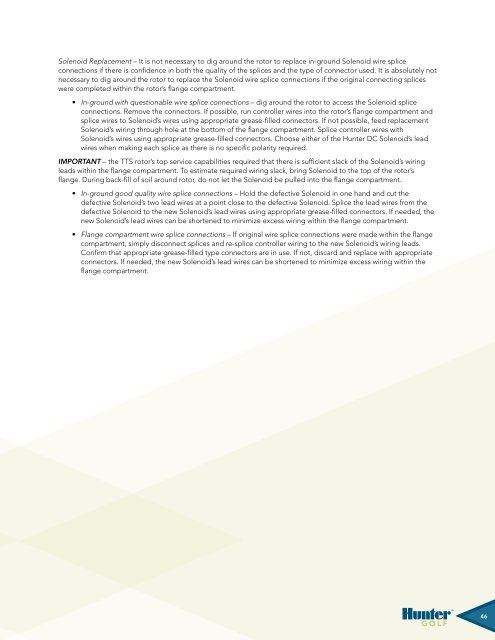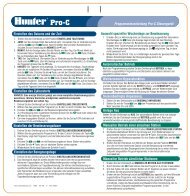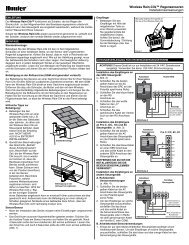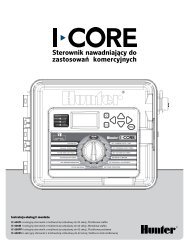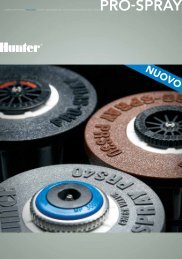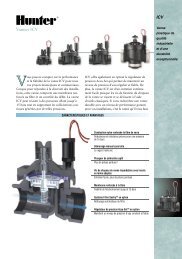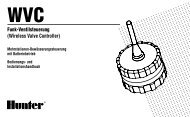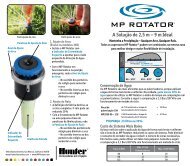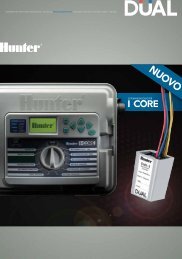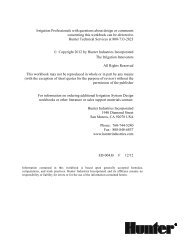TTS Golf RoToR oWNERS MANUAl - Hunter Industries
TTS Golf RoToR oWNERS MANUAl - Hunter Industries
TTS Golf RoToR oWNERS MANUAl - Hunter Industries
Create successful ePaper yourself
Turn your PDF publications into a flip-book with our unique Google optimized e-Paper software.
Solenoid Replacement – It is not necessary to dig around the rotor to replace in-ground Solenoid wire spliceconnections if there is confidence in both the quality of the splices and the type of connector used. It is absolutely notnecessary to dig around the rotor to replace the Solenoid wire splice connections if the original connecting spliceswere completed within the rotor’s flange compartment.• In-ground with questionable wire splice connections – dig around the rotor to access the Solenoid spliceconnections. Remove the connectors. If possible, run controller wires into the rotor’s flange compartment andsplice wires to Solenoid’s wires using appropriate grease-filled connectors. If not possible, feed replacementSolenoid’s wiring through hole at the bottom of the flange compartment. Splice controller wires withSolenoid’s wires using appropriate grease-filled connectors. Choose either of the <strong>Hunter</strong> DC Solenoid’s leadwires when making each splice as there is no specific polarity required.IMPORTANT – the <strong>TTS</strong> rotor’s top service capabilities required that there is sufficient slack of the Solenoid’s wiringleads within the flange compartment. To estimate required wiring slack, bring Solenoid to the top of the rotor’sflange. During back-fill of soil around rotor, do not let the Solenoid be pulled into the flange compartment.• In-ground good quality wire splice connections – Hold the defective Solenoid in one hand and cut thedefective Solenoid’s two lead wires at a point close to the defective Solenoid. Splice the lead wires from thedefective Solenoid to the new Solenoid’s lead wires using appropriate grease-filled connectors. If needed, thenew Solenoid’s lead wires can be shortened to minimize excess wiring within the flange compartment.• Flange compartment wire splice connections – If original wire splice connections were made within the flangecompartment, simply disconnect splices and re-splice controller wiring to the new Solenoid’s wiring leads.Confirm that appropriate grease-filled type connectors are in use. If not, discard and replace with appropriateconnectors. If needed, the new Solenoid’s lead wires can be shortened to minimize excess wiring within theflange compartment.46


